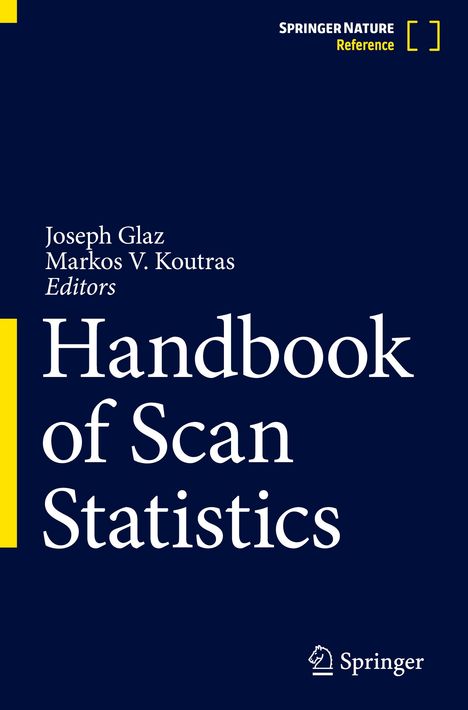Handbook of Scan Statistics, Gebunden
Handbook of Scan Statistics
Buch
lieferbar innerhalb 2-3 Wochen
(soweit verfügbar beim Lieferanten)
(soweit verfügbar beim Lieferanten)
Aktueller Preis: EUR 693,39
- Herausgeber:
- Joseph Glaz, Markos V. Koutras
- Verlag:
- Springer, 05/2024
- Einband:
- Gebunden, HC runder Rücken kaschiert
- Sprache:
- Englisch
- ISBN-13:
- 9781461480327
- Artikelnummer:
- 1556527
- Umfang:
- 832 Seiten
- Copyright-Jahr:
- 2016
- Gewicht:
- 1547 g
- Maße:
- 241 x 160 mm
- Stärke:
- 47 mm
- Erscheinungstermin:
- 1.5.2024
- Hinweis
-
Achtung: Artikel ist nicht in deutscher Sprache!
Klappentext
First handbook devoted entirely to scan statistics Readership and users apply to a vast audience in the scientific world All contributors are experts in this burgeoning field of scan statistics
Biografie (Joseph Glaz)
Joseph Glaz has been appointed (effective July 1, 2011) as head of the Department of Statistics, University of Connecticut. He has co-authored several books. Glaz is the current editor-in-chief of the following Springer journal: Methodology and Computing in Applied Probability. §Honors and Awards include : election to the Connecticut Academy of Arts and Sciences (2011), elected fellow of the Institute of Mathematical Sciences (2009), AAUP Excellence in Research Award (2006), Abraham Wald Prize in Sequential Analysis (2006), elected fellow of the American Statistical Assoc. (2000), elected member of the International Statistical Institute (1999).§Most importantly, Joe Glaz has worked closely with Joseph Naus, the father of scan statistics, since this area of statistics was conceived around 1999.Biografie (Markos V. Koutras)
MARKOS V. KOUTRAS, PhD, is Professor of Statistics at the University of Piraeus in Greece, where he researches applied probability, reliability, and distribution theory.
Handbook of Scan Statistics
Aktueller Preis: EUR 693,39
